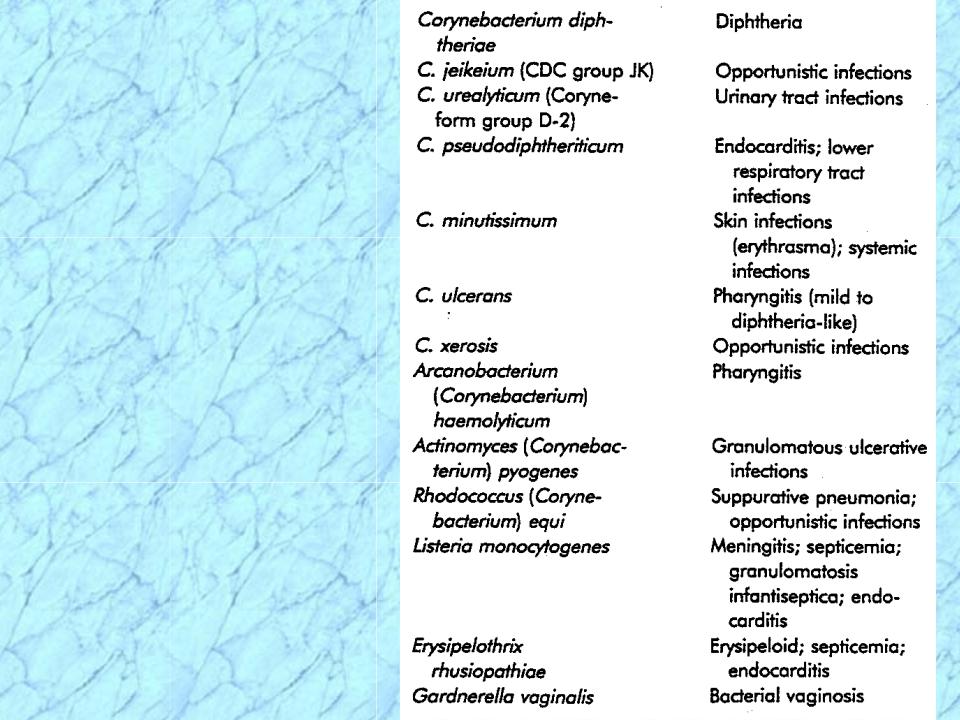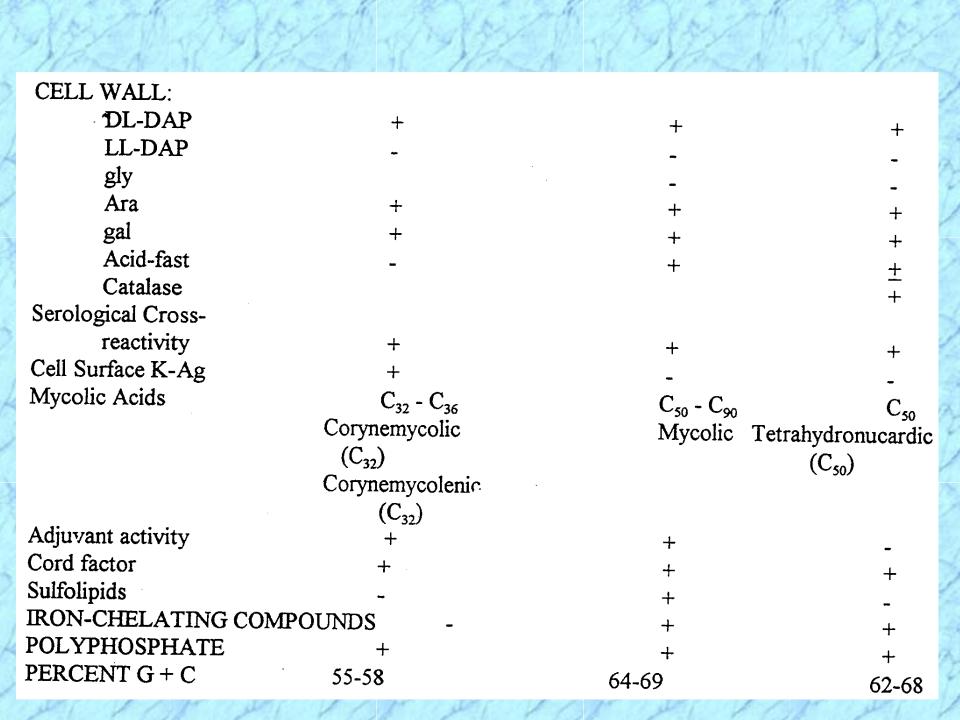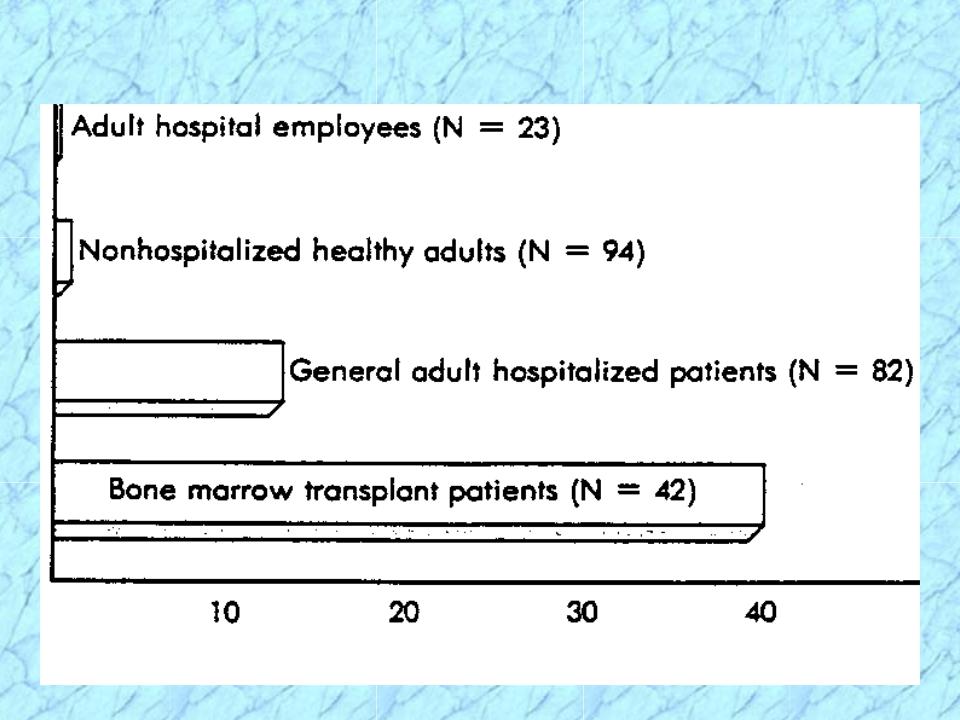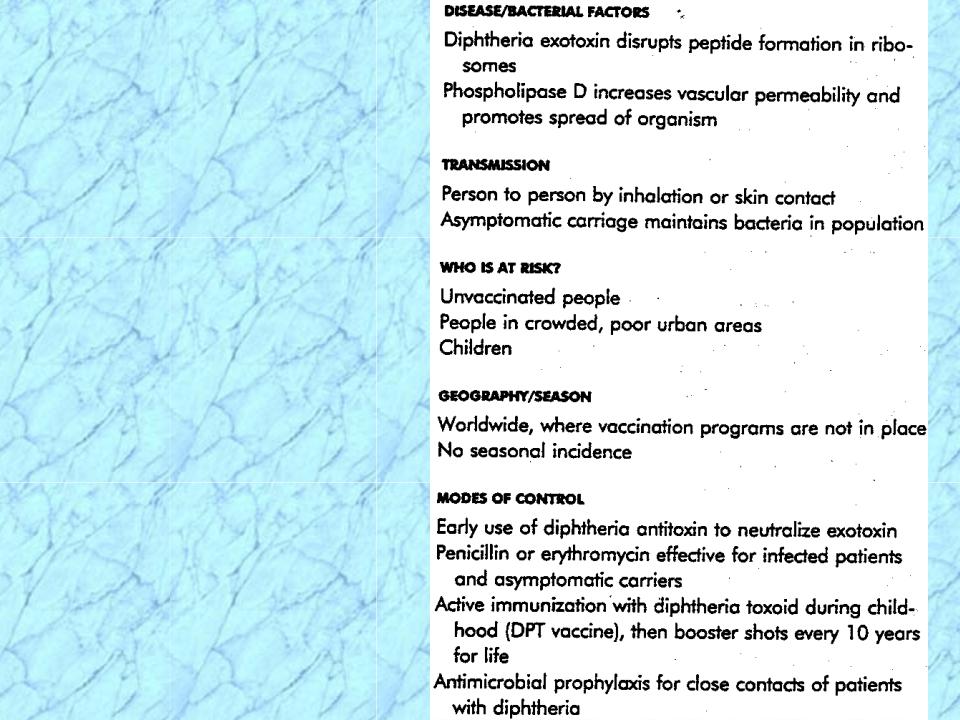
- •Corynebacterium
- •Pathogenic
- •Corynebacteria (Genus Corynebacterium)
- •Distinguishing Features of CMN Group
- •Pathogenic Corynebacterial
- •Corynebacterium urealyticum
- •Corynebacterium jeikeium
- •Corynebacterium jeikeium Carriers
- •Corynebacterium diphtheriae
- •Epidemiology
- •Incidence of Diphtheria in the USA
- •Incidence of Diphtheria in
- •Virulence Factors in
- •Diphtheria tox Gene in Beta Bacteriophage and Prophage
- •See Handout on Exotoxins
- •Mechanism of Action of Diphtheria Toxin:
- •Molecular Structure of Diphtheria Toxin
- •Heparin-binding epidermal growth factor on heart & nerve surfaces
- •Diagnostic Schick Skin Test
- •In vivo Detection
- •Listeria monocytogenes
- •Where do we find Listeria?
- •Epidemiology
- •Epidemiology of Listeria Infections
- •Listeriosis
- •Methods That Circumvent
- •Intracellular Survival & Replication of Listeria
- •Erysipelothrix rhusopathiae
- •Epidemiology
- •REVIEW
- •Corynebacterium diphtheriae
- •Diphtheria tox Gene in Beta Bacteriophage and Prophage
- •See Handout on Exotoxins
- •Mechanism of Action of Diphtheria Toxin:
- •Corynebacterium jeikeium
- •Corynebacterium urealyticum
- •Listeria monocytogenes
- •Epidemiology of Listeria Infections
- •Listeriosis
- •Intracellular Survival & Replication of Listeria
- •Erysipelothrix rhusopathiae


Corynebacterium
Erysipelothrix
& Listeria

Pathogenic
Anaerobic
Gram-Positive
Bacilli

Corynebacteria (Genus Corynebacterium)
Aerobic or facultatively anaerobic
Small, pleomorphic (club-shaped), gram-positive bacilli that appear in short chains (“V” or “Y” configurations) or in clumps resembling “Chinese letters”
Cells contain metachromatic granules (visualize with methylene blue stain)
Lipid-rich cell wall contains meso-diaminopimelic acid, arabino-galactan polymers, and short-chain mycolic acids
Lysogenic bacteriophage encodes for potent exotoxin in virulent strains

Distinguishing Features of CMN Group
Corynebacterium Mycobacterium Nocardia

Pathogenic Corynebacterial
Species
Corynebacterium diphtheriaeCorynebacterium jeikeiumCorynebacterium urealyticum

Corynebacterium urealyticum
Urinary tract infections (UTI’s); rare but important
Urease hydrolyzes urea; release of NH4+, increase in pH, alkaline urine, renal stones

Corynebacterium jeikeium
Opportunistic infections in immunocompromised
(e.g., patients with blood disorders, bone marrow transplants, intravenous catheters)
Multiple antibiotic resistance common (MDR)
Carriage on skin of up to 40% of hospitalized patients (e.g., marrow t-plants)

Corynebacterium jeikeium Carriers
Percentage of Individuals Colonized

Corynebacterium diphtheriae
Respiratory diphtheria (pseudomembrane on pharynx) and cutaneous diphtheria
Prototype A-B exotoxin acts systemically
• Toxoid in DPT and TD vaccines
Diphtheria toxin encoded by tox gene introduced by lysogenic bacteriophage (prophage)
Selective media: cysteine-tellurite; serum tellurite; Loeffler’s
Gravis, intermedius, and mitis colonial morphology

Epidemiology
of
Diphtheria
